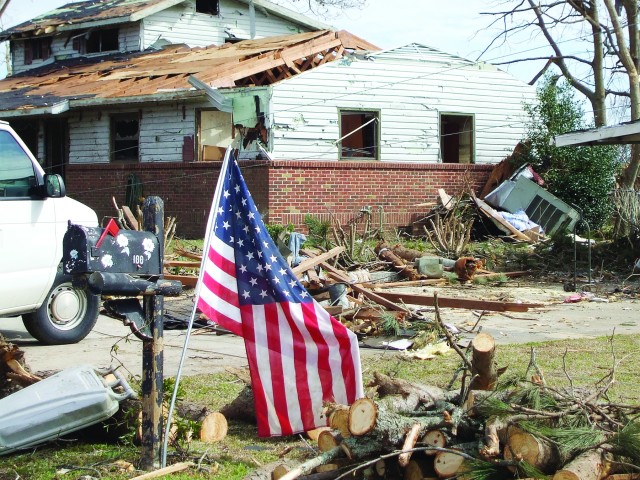FORT RUCKER, Ala.--In an effort to best protect the installation's people and assets, Fort Rucker officials occasionally make changes in emergency preparedness and response policies.
One such change came after a devastating tornado struck the neighboring city of Enterprise March 1, 2007. The tornado killed nine people, including eight students when it destroyed Enterprise High School.
Even though Fort Rucker Soldiers, including Air Ambulance Detachment "Flatiron" personnel, responded to help storm victims, Emergency Operations Officer Maj. Michael Hughes said responses such as that were not automatic.
Policy now dictates "if we've got a confirmed touchdown within 50 nautical miles, the Crisis Management Team (CMT) assembles in the Installation Operations Center to determine if Fort Rucker needs to aid in recovery efforts," Hughes said. The CMT consists of selected directorate and unit leaders and helps the command group guide how the installation will respond to a disaster.
Before the Enterprise tornado disaster, Hughes said officials took a "wait-and-see" approach when determining whether to respond. The new policy forces post leaders to be more proactive.
Hughes said the change was made for a reason. "All these communities our people are from, and we consider these communities a part of Fort Rucker," he said.
Fort Rucker officials also recently created a standing response package to better respond to hurricane threats, Hughes said.
The policy allows a certain number of each aircraft to be stacked in flying condition so Soldiers can respond immediately to emergencies after a storm passes, Hughes said. That includes UH-60 Black Hawks to handle troop transportation and sling-load operations.
Fort Rucker Weather Operations Assistant Site Manager Cindy Howell said recent weather emergencies have taught department staff to educate the public about weather warnings and sirens as much as they can. Weather Operations staff members, acting independently of the National Weather Service, will tell IOC personnel to sound the alarms if a tornado threat is within 15 miles of the installation.
Howell said the alarm will alternate between one-minute emissions and two-minute pauses. She urged residents to take cover inside when the sirens blare.
To better help notify community members of an impending threat, Hughes said eight new weather sirens were recently installed around post.
Directorate of Public Works (DPW) director Ed Janasky said his department learns little nuances during each storm that must be tweaked during emergency situations, but no major changes have been made in recent years. He added when the post allowed other companies to provide utilities in a cost-saving move, community members benefitted in another way.
Janasky said the utility companies have more resources and expertise, allowing utilities to be restored more quickly than DPW staff and contractors could in the past.
These changes, as well as alerts and public awareness education, help protect community members should disaster strike here.


Social Sharing